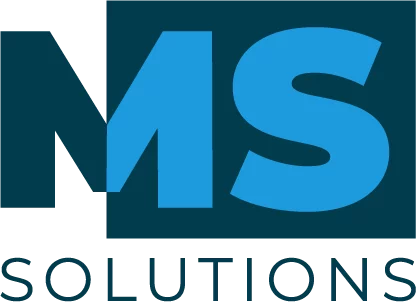IT strategic plan
With the completion of an IT strategic plan and a thorough analysis of your IT estate, you will gain a transparent view of the contribution of technology to your organization’s strategy, and a clear representation of IT priorities. Clearly define your IT operational targets and the digital transformation strategy best suited to support your future growth.
Did you know that …
Our MS Solutions experts recommend that you conduct an IT strategic plan to support your digital transformation.
Why create an IT strategic plan and entrust it to an external partner?
An IT strategic plan is a cost-effective investment that ensures that your IT decisions are aligned with your organization’s overall strategy. If you don’t have an IT master plan, you run the risk of having IT projects and infrastructure that don’t fit your organization’s needs.
- You will gain visibility into the contribution of IT to your organizational strategy. You'll minimize security risks with a thorough analysis of your edge security. And above all, you will obtain a multitude of recommendations, applicable in the short and medium term, to improve your IT posture.
- By entrusting the realization of your IT master plan to an external partner, you choose experience and objectivity. At MS Solutions, the master plan is an exercise carried out by experienced specialists who work in collaboration with CISA and CISSP certified auditors to produce deliverables that meet the highest industry standards in auditing and cybersecurity.
Inclusions for an IT strategic plan :
Developing an IT strategic plan requires considerable effort and involves various stakeholders in your organization. The four main steps are as follows :
- Audit: complete IT assessment, internal processes and information flows
- Analysis: interviews, consolidation of objectives and gap analysis
- Synthesis: gather information, submit scenarios and determine direction
- Strategy: toolbox, recommendations and IT master plan
MS Solutions is committed to providing you with a detailed IT strategic plan, as well as tactical and strategic recommendations.
The process for an IT strategic plan :
The methodology that we recommend for the realization of your IT strategic plan is adapted to the size and reality of your organization. The four required phases (Audit, Analysis, Synthesis and Strategy) follow a structured and collaborative process, where MS Solutions’ specialist practitioners will interact with the key players targeted by your organization.
This phase allows for a complete assessment of the current situation, internal processes, information flows, as well as the various technologies used (network infrastructure, software applications and security parameters). The audit will also make a non-exhaustive inventory of the management procedures, as well as IT governance, in order to know the impact for the organization of the choices that will be proposed later.
It is during this phase that the key players will be able to express their information needs, both current and in the medium term (three to five years). It is very important at this stage to be imaginative and not to reject any need a priori, even if it may seem impossible to meet it at this time. Our specialist practitioners will list these needs, identify them, classify them, prioritize them and estimate them.
This is the phase where integration of the information gathered previously will take place. Here, our specialist practitioners will highlight the gap between the current situation and the desired one, in order to determine plausible growth scenarios and to identify with the client the desired direction according to their interests and preferences. This is where the informational orientation of the coming years will be drawn, for each sector of activity of the company.
This is the final phase of the IT strategic plan mandate. Here, our specialist practitioners will exhaustively document all of the digital transformation orientations and methods chosen in phase 3. The document produced will be clear, detailed and eloquent. It can easily be used by the organization to orchestrate the changes required to reachtargeted goals.
Our Commitment

We are committed to staying on the cutting edge of technological innovations, and to helping you benefit from them, while evolving our company to remain at the forefront.
Maxime Dion
President, MS Solutions
News from the IT world
Microsoft 365: Reduce your mental load at work
This article does not claim to revolutionize mental health at work. Mental workload is a complex subject that requires comprehensive and personalized support. However, everyday tools, like those presented in…
Optimize your productivity with Copilot training for M365
Copilot for Microsoft 365 is a revolutionary tool, powered by cutting-edge artificial intelligence (AI), that integrates directly into your Microsoft ecosystem. Imagine having an intelligent assistant at your side, accessible…
New Microsoft Teams: A redesigned collaboration experience
Microsoft Teams has a new interface and new features, providing a smoother and more efficient collaboration experience. This major update, called New Teams, gradually replaces the classic version of the…
MS Solutions talks about cybersecurity & new cyber risk trends in Business
The Journal Les Affaires published on October 12, 2023 a report on cybersecurity featuring Bernard Després, Partner, Security and Audit Practice Director at MS Solutions, who talks to us about…
Protect your communications: email encryption and best practices
In the digital age, email security has become a major concern. With cyber threats and hacks on the rise, it is essential to take steps to protect your online communications.…
Copilot in Forms: Create effective forms in the blink of an eye
Have you ever dreaded creating forms? Finding relevant questions, formulating options and formatting them can be tedious and time-consuming. Luckily, Copilot in Forms is here to make your life easier!…








